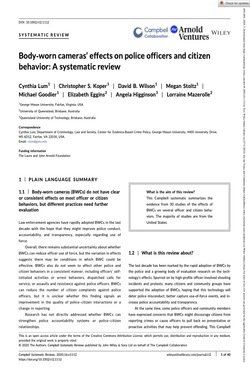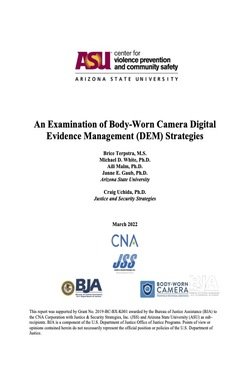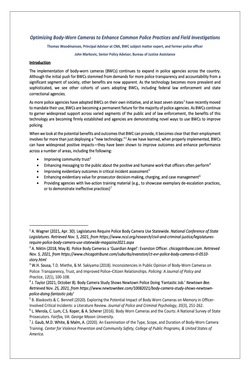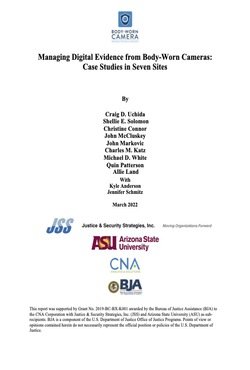By Cynthia Lum, Christopher S. Koper, David B. Wilson, Megan Stoltz, Michael Goodier, Elizabeth Eggins, Angela Higginson, Lorraine Mazerolle
Body-worn cameras do not have clear or consistent effects on most officer or citizen behaviors, but different practices need further evaluation. Law enforcement agencies have rapidly adopted body-worn cameras (BWCs) in the last decade with the hope that they might improve police conduct, accountability, and transparency, especially regarding use of force. Overall, there remains substantial uncertainty about whether BWCs can reduce officer use of force, but the variation in results over studies suggests there may be conditions in which BWC could be effective. BWCs also do not seem to affect other police and citizen behaviors in a consistent manner, including officers’ self-initiated activities or arrest behaviors, dispatched calls for service, or assaults and resistance against police officers. BWCs can reduce the number of citizen complaints against police officers, but it is unclear whether this finding signals an improvement in the quality of police-citizen interactions or a change in reporting. Research has not directly addressed whether BWCs can strengthen police accountability systems or police-citizen relationships.
Campbell Systematic Review, 2020. 40p.










